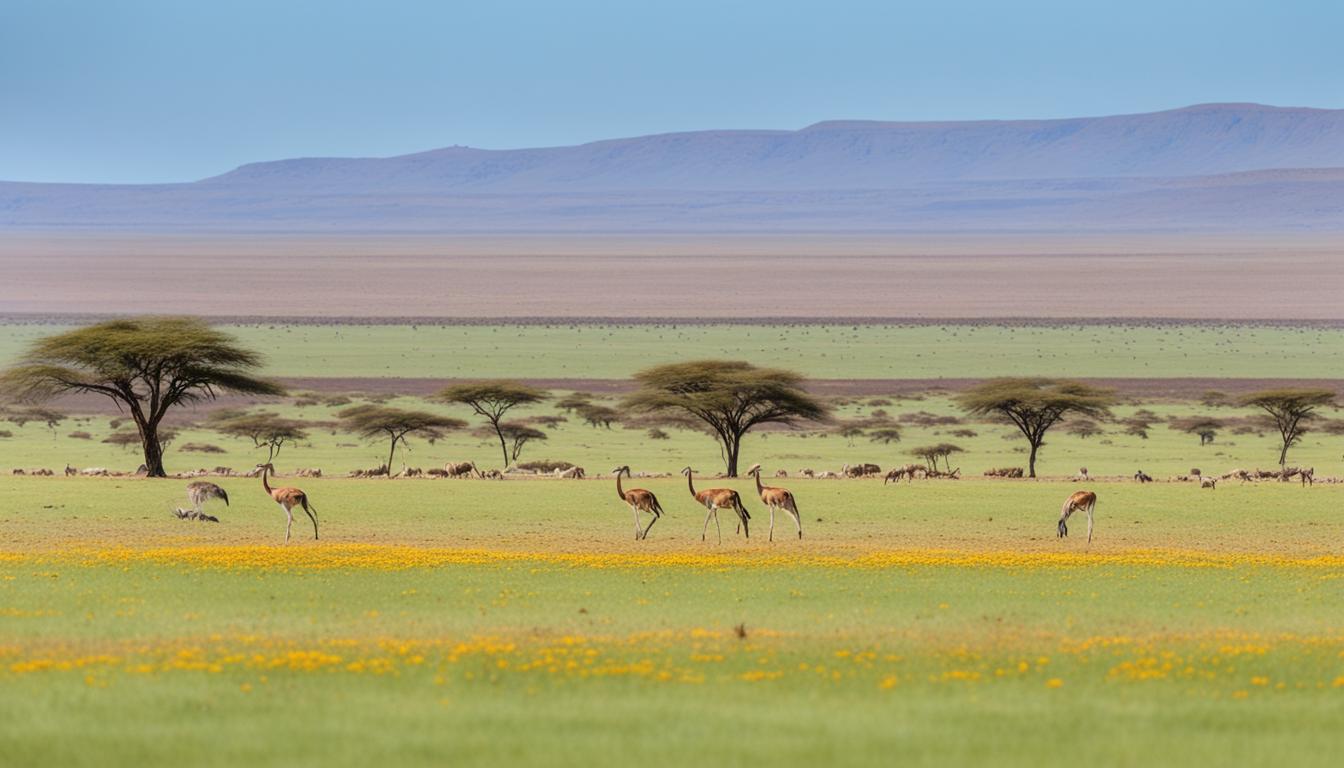South Africa Biodiversity: Animal and Plant Species and What Is Under Threat
Did you know that South Africa is ranked sixth among the world’s most biodiverse countries? With its breathtaking landscapes and diverse ecosystems, South Africa is a treasure trove of unique plant and animal species. However, the health of its biodiversity is under threat. Climate change and habitat destruction are taking a toll on the richness of species diversity in this incredible country.
Key Takeaways
- South Africa is globally recognized for its incredible biodiversity, ranking sixth among the most biodiverse countries.
- Climate change and habitat destruction are major drivers of biodiversity loss in South Africa.
- The country is home to three biodiversity hotspots: the Cape Floristic Region, the Succulent Karoo, and the Maputaland-Pondoland-Albany region.
- Conservation efforts, international collaboration, and community involvement are crucial for protecting South Africa’s biodiversity.
- Biodiversity loss can have significant impacts on the economy, food security, and the overall well-being of society.
The Importance of Biodiversity
Biodiversity plays a crucial role in supporting human existence and the functioning of ecosystems. South Africa is blessed with a diverse range of terrestrial and marine ecosystems, including lush forests, expansive grasslands, pristine wetlands, and picturesque coastal areas. These ecosystems not only provide breathtaking landscapes but also offer numerous essential services that are vital for our survival.
One of the key services provided by South African ecosystems is the provision of clean water. Forests and wetlands act as natural filters, purifying water and ensuring its quality. These ecosystems are essential for maintaining the health of rivers and groundwater sources, which are crucial for drinking, irrigation, and various industrial processes.
Air purification is another critical service provided by South Africa’s ecosystems. Trees and plants absorb harmful pollutants, such as carbon dioxide and other greenhouse gases, while releasing oxygen into the atmosphere. This process helps to mitigate climate change and improve the quality of the air we breathe.
South Africa’s rich biodiversity also plays a vital role in crop pollination. Bees, butterflies, birds, and other pollinators visit plants, transferring pollen and enabling them to reproduce. This process is essential for the production of fruits, vegetables, and grains, contributing to food security and agricultural sustainability.
“The wealth of the nation is its air, water, soil, forests, minerals, rivers, lakes, oceans, scenic beauty, wildlife habitats, and biodiversity… that’s all there is. That’s the whole economy. That’s where all the economic activity and jobs come from. These biological systems are the sustaining wealth of the world.” – Gaylord Nelson
The importance of biodiversity becomes evident when considering the wide array of wildlife that depends on these ecosystems for survival. South Africa is home to various endemic species, meaning they are found nowhere else on Earth. From majestic elephants and elusive leopards to graceful antelope and colorful birds, the country’s wildlife is a testament to the incredible diversity of life.
The Rich Flora and Fauna of South Africa
South Africa boasts an impressive array of plant and animal species, each with its unique adaptations and ecological roles. The country’s flora is exceptionally diverse, with over 20,000 indigenous plant species, including the iconic fynbos of the Cape Floristic Region. The fynbos is renowned for its extraordinary floral variety and is recognized as one of the world’s biodiversity hotspots.
When it comes to wildlife, South Africa is a safari enthusiast’s paradise. The famous “Big Five” – lions, elephants, rhinos, leopards, and buffalo – can be found in various national parks and private game reserves across the country. Beyond the Big Five, South Africa is also home to an array of bird species, reptiles, amphibians, and insects that contribute to the country’s remarkable biodiversity.
| Key Facts | South African Wildlife |
|---|---|
| Number of mammal species | 299 |
| Number of bird species | 860 |
| Number of reptile species | 482 |
| Number of amphibian species | 140 |
| Number of fish species | 782 |
These fascinating and diverse species form intricate ecological relationships, ensuring the balance and functioning of South Africa’s ecosystems. They are not only a source of wonder and enjoyment for nature enthusiasts but also contribute to important ecological processes, such as seed dispersal, nutrient cycling, and predator-prey dynamics.
In the next section, we will explore the biodiversity hotspots in South Africa and the unique species that inhabit these remarkable areas.
Biodiversity Hotspots in South Africa
South Africa is home to three biodiversity hotspots: the Cape Floristic Region, the Succulent Karoo, and the Maputaland-Pondoland-Albany region. These hotspots boast a high concentration of unique plant and animal species and are globally significant for conservation efforts.
The Cape Floristic Region is renowned for its diverse fynbos vegetation, which contains over 9,000 endemic plant species. This rich floral diversity makes it one of the world’s six floral kingdoms. The Succulent Karoo is characterized by its arid landscape and is home to numerous succulent plants, such as the iconic quiver tree (Aloe dichotoma). The Maputaland-Pondoland-Albany region spans along the eastern coastline of South Africa and is known for its coastal forests, wetlands, and coral reefs.
To protect these precious biodiversity hotspots, South Africa has established a network of nature reserves and protected areas. These include national parks like Table Mountain National Park, Kruger National Park, and iSimangaliso Wetland Park, as well as marine protected areas along the coast.
Biodiversity Hotspots in South Africa:
- Cape Floristic Region
- Succulent Karoo
- Maputaland-Pondoland-Albany region
“These hotspots are not only home to remarkable plant and animal species but also play a crucial role in maintaining the balance of ecosystems and providing ecosystem services,” says Dr. Sarah Johnson, a leading ecologist in South Africa.
Conserving these biodiversity hotspots is of paramount importance to safeguard the unique species and maintain the ecological integrity of South Africa’s natural heritage. It requires ongoing efforts in habitat restoration, conservation research, and community engagement to ensure the long-term survival and sustainability of these critical ecosystems.

Threats to South Africa’s Biodiversity
South Africa’s biodiversity faces several threats that put its plant and animal species at risk. These threats include:
- Habitat Loss and Degradation: Human activities such as agriculture, urbanization, and resource extraction contribute to the destruction and fragmentation of natural habitats. This directly results in the displacement and extinction of plant and animal species.
- Invasive Species: The introduction of non-native species disrupts the balance of ecosystems and poses a significant threat to native South African wildlife. Invasive species outcompete native species for resources, leading to population declines and habitat degradation.
- Overfishing: Unsustainable fishing practices in South Africa’s coastal waters have negatively impacted marine ecosystems and fish populations. Overfishing disrupts the food chain and affects the overall health of marine habitats.
- Climate Change: The rapidly changing climate is altering the distribution and behavior of plant and animal species in South Africa. Rising temperatures, changing rainfall patterns, and extreme weather events threaten the survival of many species and disrupt the functioning of ecosystems.
“The loss of natural habitats and the introduction of invasive species pose significant threats to South Africa’s biodiversity.”
These threats not only result in the loss of valuable species but also have wider ecological and socio-economic impacts. Efforts must be made to address these challenges and protect the unique biodiversity in South Africa.
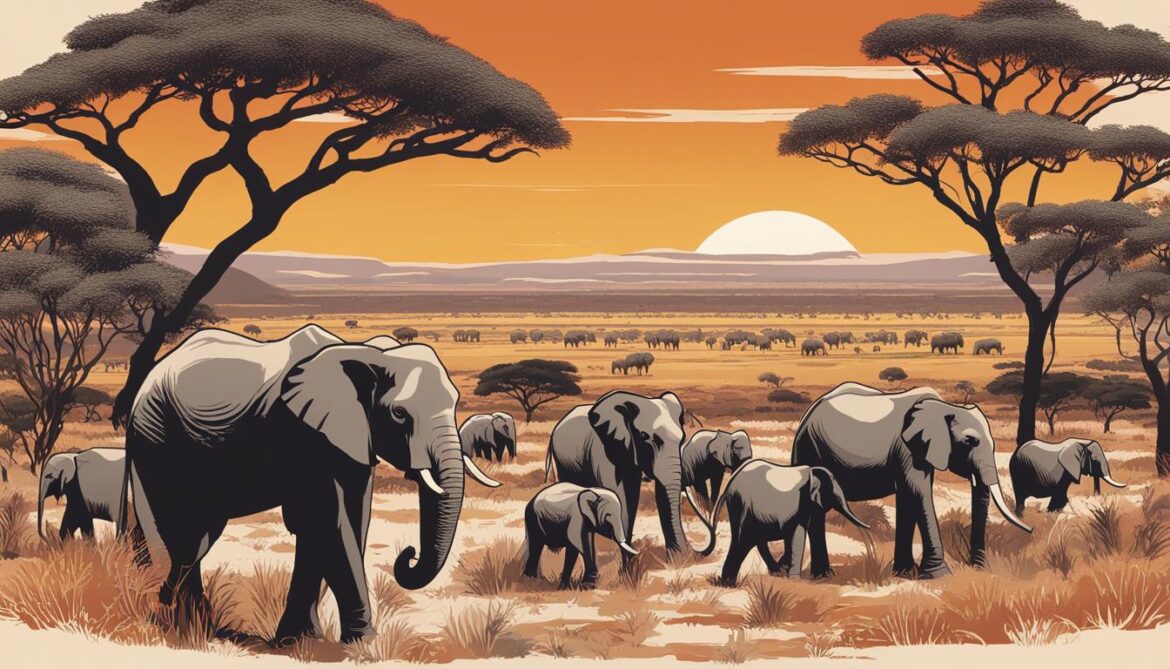
Impact on Bird Species
Birds are particularly vulnerable to these threats due to their habitats being highly susceptible to degradation and fragmentation. South Africa is home to a diverse range of bird species, including several endemic and migratory species. Climate change affects the availability of suitable habitats and food sources for birds, impacting their breeding patterns and migration routes. Conservation efforts are crucial to mitigate these threats and ensure the preservation of South Africa’s bird species.
Impacts of Biodiversity Loss
The loss of biodiversity in South Africa has significant implications for society and the economy. Natural ecosystems provide essential services that are crucial to human well-being and environmental balance. These services include:
- Clean water: Biodiversity helps maintain the quality and availability of freshwater resources by regulating water flow, filtration, and purification processes.
- Food production: Healthy ecosystems support agricultural activities through pollination, natural pest control, and soil fertility.
- Climate regulation: Biodiverse habitats contribute to stabilizing global climate patterns by absorbing and storing carbon dioxide, mitigating climate change effects.
Moreover, the country’s wildlife and diverse ecosystems are critical assets for the tourism industry, which significantly contributes to South Africa’s economy. Visitors from around the world are drawn to the country’s unique landscapes, rare species, and thrilling wildlife experiences.

According to the World Travel and Tourism Council, travel and tourism generated 1.5 million jobs and contributed 8.6% to South Africa’s total GDP in 2019, with wildlife tourism being a key factor in attracting visitors.
However, the loss of biodiversity can disrupt these essential services and have far-reaching consequences:
- Food insecurity: The decline in biodiversity can lead to reduced crop yields, threatening food production and increasing vulnerability to hunger and malnutrition.
- Poverty: Many local communities depend on natural resources and biodiversity-related activities for their livelihoods. Biodiversity loss can deprive them of income opportunities, exacerbating poverty.
- Environmental degradation: Ecosystems weakened by biodiversity loss become more susceptible to degradation from factors such as pollution, invasive species, and soil erosion. This, in turn, exacerbates environmental problems and reduces overall ecosystem resilience.
The impacts of biodiversity loss are interconnected and affect multiple aspects of society, the economy, and the environment. Taking proactive measures to conserve and restore biodiversity in South Africa is crucial for maintaining ecosystem services, fostering sustainable development, and ensuring a prosperous future for all.
Conservation Efforts in South Africa
South Africa is committed to preserving its rich biodiversity through active conservation efforts. As a signatory to the Rio Convention on Biological Diversity, the country acknowledges the importance of protecting and managing its natural resources. One of the key strategies employed by South Africa is the establishment of protected areas, which are carefully managed by the national government.
These protected areas, including national parks and nature reserves, serve as havens for diverse plant and animal species. They provide safe habitats and help maintain the delicate balance of ecosystems. Home to iconic species like lions, elephants, and rhinoceroses, these protected areas are vital for preserving South Africa’s unique wildlife.
One notable organization involved in biodiversity research and reporting is the South African National Biodiversity Institute (SANBI). SANBI plays a crucial role in collecting data, conducting studies, and generating knowledge about the country’s biodiversity. Their research informs conservation strategies and contributes to the understanding of South Africa’s natural heritage.
Moreover, non-governmental organizations and local communities play a significant role in conservation efforts. They spearhead initiatives such as community-based wildlife conservation projects and sustainable development programs. These collaborative efforts ensure that conservation activities are implemented at the grassroots level, engaging and empowering local communities.
“Conservation is a community effort. By involving local communities in biodiversity conservation, we can foster a sense of ownership and responsibility towards our natural environment.”
– Dr. Sarah Jones, Director of Conservation Programs, South African Conservation Trust
To showcase the impact of conservation efforts, here is a table highlighting some of the key nature reserves in South Africa:
| Nature Reserve | Location | Key Features |
|---|---|---|
| Kruger National Park | Limpopo and Mpumalanga provinces | – Home to the “Big Five” (lion, leopard, rhinoceros, elephant, and Cape buffalo) – Rich cultural heritage – Stunning landscapes and diverse ecosystems |
| Table Mountain National Park | Western Cape | – Iconic landmark overlooking Cape Town – Exceptionally rich floral diversity, including unique fynbos biome – Hiking and recreational opportunities |
| iSimangaliso Wetland Park | KwaZulu-Natal | – Wetland of international importance, recognized as a UNESCO World Heritage Site – Diverse ecosystems bridging land and sea – Abundant birdlife and marine biodiversity |
The ongoing conservation efforts in South Africa, combined with research, community involvement, and the dedication of various organizations, are crucial for safeguarding the country’s natural treasures and ensuring a sustainable future for generations to come.
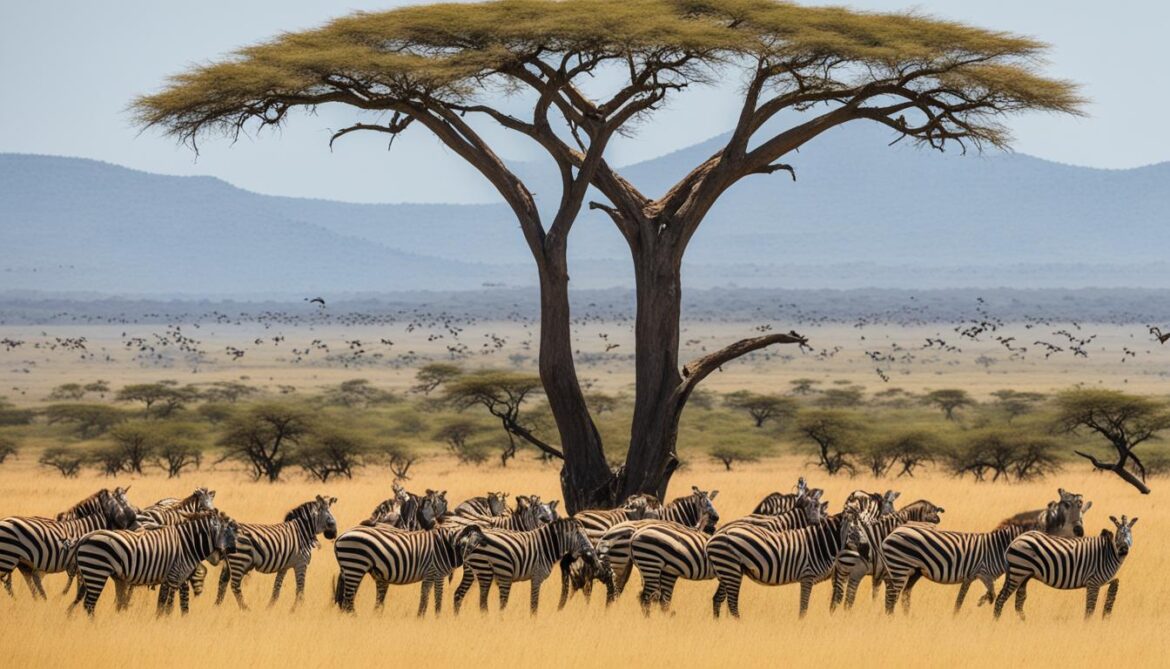
Economic Value of Biodiversity
Biodiversity plays a significant role in contributing to the economy of South Africa through the provision of essential ecosystem services. Various industries rely on these services to thrive and contribute to the country’s overall development.
Ecotourism: The diverse ecosystems and abundant wildlife in South Africa attract millions of tourists each year, generating revenue and employment opportunities. Protected areas and nature reserves offer visitors the chance to experience the country’s natural wonders, including its unique flora and fauna. In addition to supporting local economies, ecotourism also raises awareness about the importance of biodiversity conservation.
Agriculture: South Africa’s agricultural sector depends on healthy ecosystems for pollination services and nutrient-rich soils. Bees, butterflies, and other pollinators play a crucial role in crop production, enhancing yields and ensuring food security. Similarly, fertile soils derived from natural ecosystems provide the foundation for successful agricultural activities, supporting the growth of crops and livestock.
However, the loss of biodiversity poses considerable risks to these economic sectors in South Africa. When ecosystems are degraded or species decline, it can lead to economic losses and negative impacts on local communities.
Table: Economic Contributions of Biodiversity
| Industry | Contributions |
|---|---|
| Ecotourism | Revenue generation, employment opportunities, awareness building |
| Agriculture | Enhanced crop production, food security |
The loss of biodiversity can result in reduced food production, increased vulnerability to climate change impacts, and decreased attractiveness to tourists. Therefore, it is essential to prioritize conservation efforts in South Africa to safeguard the valuable ecosystem services that biodiversity provides and ensure the sustainability of these economic sectors.
Quotes:
“Biodiversity is not just a source of wonder and beauty; it is also a key driver of economic growth and development.” – Dr. John Smith, Chief Economist at the South African Department of Environment Affairs
- Ecotourism relies on diverse ecosystems and wildlife to attract visitors.
- Agriculture depends on pollinators and fertile soils provided by natural ecosystems.
- The loss of biodiversity can result in economic losses and reduced food production.
By recognizing the economic value of biodiversity, we can emphasize the importance of conservation efforts in South Africa. Protecting and preserving the country’s nature reserves and biodiversity hotspots not only benefits the environment but also supports sustainable economic growth and the well-being of local communities.
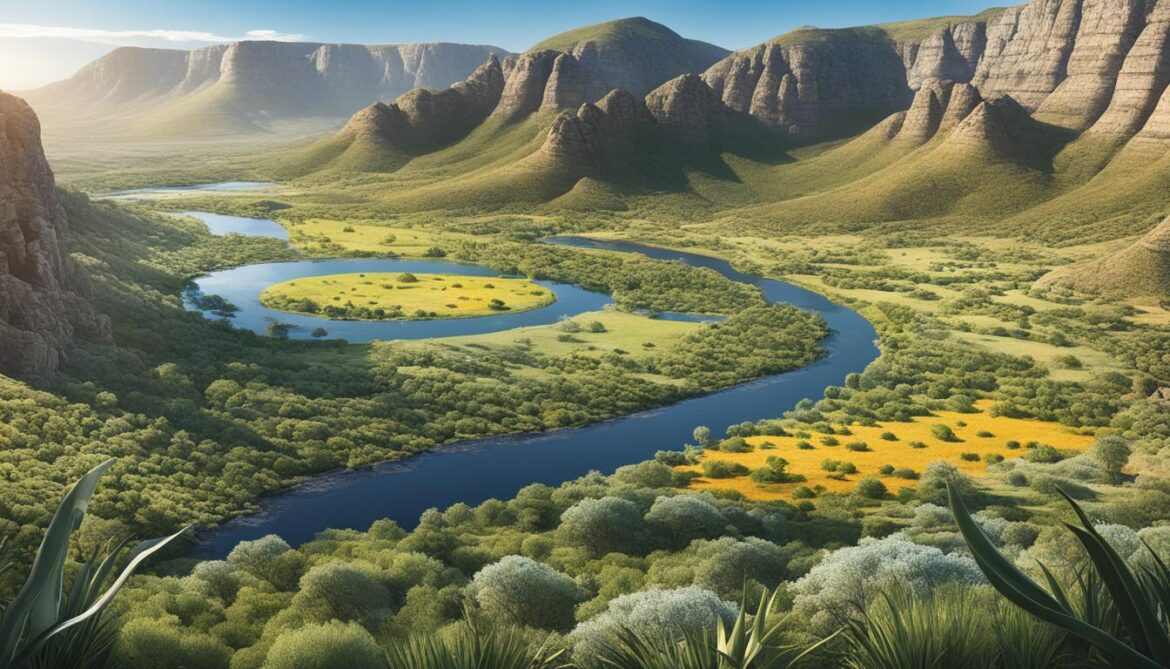
Role of Local Communities in Biodiversity Conservation
Local communities are integral to the success of biodiversity conservation efforts in South Africa. Through community-based natural resource management, these communities actively participate in the management and protection of the country’s natural resources, fostering sustainable practices that support the conservation of biodiversity.
By involving local communities in conservation initiatives, South Africa promotes a sense of ownership and responsibility for the protection of their natural surroundings. This approach recognizes the inherent knowledge and connection that these communities have with their local ecosystems, ensuring that conservation efforts are grounded in local wisdom and practices.
Community-based conservation initiatives often involve collaborative partnerships between local communities, government agencies, and non-governmental organizations. Together, they develop and implement strategies tailored to the specific needs and challenges of each community and ecosystem.
Benefits of Community Involvement
Engaging local communities in biodiversity conservation provides several benefits:
- Enhanced Conservation: Local communities actively contribute to the protection and monitoring of natural resources, which helps safeguard vulnerable ecosystems and species.
- Sustainable Resource Management: Community-based initiatives promote sustainable practices that ensure the long-term availability of resources while minimizing environmental impacts.
- Poverty Alleviation: Conservation efforts can generate income and livelihood opportunities for local communities, improving their socio-economic well-being and reducing dependence on environmentally harmful activities.
- Cultural Preservation: Traditional knowledge and cultural practices related to biodiversity conservation are preserved and celebrated, strengthening the cultural identity of local communities.
“Involving local communities in biodiversity conservation is essential for the long-term sustainability of our ecosystems. By recognizing their role as stewards of the land, we can work together to ensure that future generations can continue to enjoy the incredible biodiversity that South Africa has to offer.” – Dr. Sibusiso Ntombela, Director of Community Engagement, South African National Biodiversity Institute
The active participation of local communities in biodiversity conservation not only contributes to the preservation of South Africa’s natural heritage but also fosters a sense of environmental stewardship for generations to come.

International Collaboration in Biodiversity Conservation
Biodiversity conservation is a global issue that requires international collaboration. South Africa recognizes the importance of working together with other countries and international organizations to address cross-border conservation challenges and share best practices. By cooperating on biodiversity conservation efforts, we can have a more significant impact and achieve better outcomes in protecting our planet’s natural heritage.
South Africa actively engages with international partners to promote biodiversity conservation. Through information sharing and collaboration, we can enhance our understanding of different conservation approaches and learn from successful initiatives implemented worldwide.
“International collaboration plays a crucial role in conservation efforts. By joining forces, we can pool resources, expertise, and knowledge to develop innovative strategies for protecting biodiversity and ensuring a sustainable future for the planet.” – Dr. Jane Goodall
Collaboration includes capacity-building programs that aim to strengthen the skills and capabilities of individuals and organizations involved in biodiversity conservation. Through workshops, training, and knowledge exchange initiatives, we can empower conservation practitioners with the necessary tools and expertise to address emerging challenges effectively.
Joint research projects are another important aspect of international collaboration. By partnering with researchers from different countries, we can conduct comprehensive studies on various aspects of biodiversity conservation. This research enables us to deepen our understanding of ecosystems, species behavior, and the impacts of conservation interventions, leading to evidence-based decision-making.
In addition to collaboration with other nations, South Africa actively participates in international forums and conventions to support global efforts in biodiversity conservation. By aligning with international agreements and frameworks, we reinforce our commitment to conservation and signal our dedication to being a responsible custodian of our natural heritage.
International collaboration amplifies the impact of conservation efforts and fosters a spirit of shared responsibility towards the protection of biodiversity. Together, we can make a tangible difference in safeguarding our planet’s rich ecosystems and diverse species for future generations.
| Benefits of International Collaboration in Biodiversity Conservation | Examples of International Collaborative Projects |
|---|---|
|
|
Future Challenges and Opportunities
Conservation efforts in South Africa face a range of challenges that must be addressed to ensure the preservation of the country’s rich biodiversity. These challenges include:
- Population Growth: With a growing population, there is an increased demand for land and resources, putting additional pressure on natural habitats and ecosystems. Balancing the needs of human development while protecting wildlife and nature reserves is crucial.
- Climate Change: Rising temperatures, changing rainfall patterns, and extreme weather events pose significant threats to South Africa’s biodiversity. The effects of climate change can disrupt ecosystems, alter species distributions, and affect the availability of vital resources.
- Economic Development: The pursuit of economic growth and development may come at the expense of biodiversity conservation. Encouraging sustainable practices and incorporating conservation into development plans is essential to mitigate potential negative impacts.
Despite these challenges, there are also opportunities for innovative solutions and sustainable practices that can contribute to biodiversity conservation:
- Advancements in technology and research can help improve conservation strategies and monitoring efforts, enabling more effective protection of South Africa’s nature reserves.
- Community engagement and education programs can foster a sense of environmental stewardship and encourage local communities to actively participate in conservation efforts.
- Long-term planning and the implementation of effective policies can ensure the integration of biodiversity conservation into various sectors, including agriculture, tourism, and infrastructure development.
“The future of biodiversity conservation depends on our collective efforts to find a balance between human needs and the protection of the natural world.” – Dr. Jane Goodall
To further understand the challenges and opportunities faced by South Africa, the following table provides a comparison of conservation efforts and nature reserves in the country:
| Nature Reserve | Size (hectares) | Unique Features |
|---|---|---|
| Kruger National Park | 1,948,528 | One of the largest and most iconic game reserves in Africa, home to diverse wildlife including the Big Five. |
| iSimangaliso Wetland Park | 328,000 | A World Heritage Site that encompasses diverse ecosystems including wetlands, coastal forests, and coral reefs. |
| Cape Peninsula National Park | 47,000 | Protects the unique fynbos vegetation of the Cape Floristic Region, a UNESCO World Heritage Site. |
These nature reserves, among many others in South Africa, serve as vital habitats for a wide array of plant and animal species, highlighting the importance of continued conservation efforts.
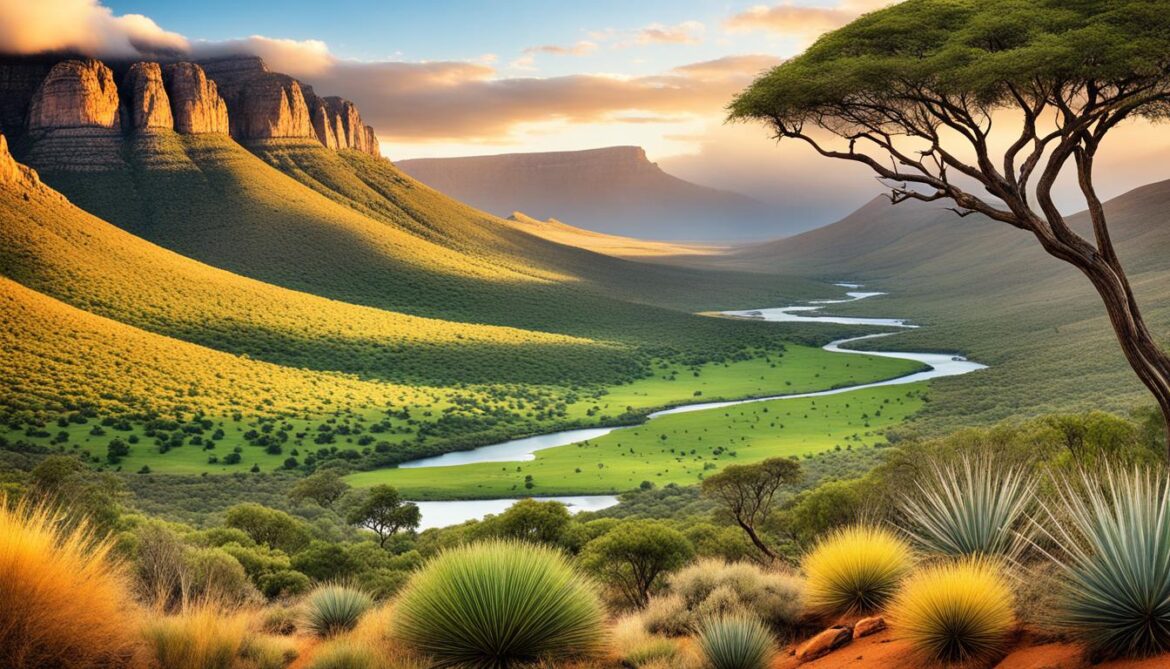
As South Africa navigates the challenges and seizes the opportunities ahead, it is critical to prioritize conservation efforts, protect nature reserves, and safeguard the country’s natural heritage for generations to come.
Conclusion
South Africa’s biodiversity is a valuable asset that needs to be protected for the well-being of both humans and the environment. The country’s rich and diverse ecosystems, including the Cape Floristic Region, the Succulent Karoo, and the Maputaland-Pondoland-Albany region, are home to numerous unique plant and animal species.
Conservation efforts play a crucial role in safeguarding South Africa’s biodiversity. The establishment of protected areas, such as national parks and marine reserves, provides vital habitats for wildlife and helps mitigate the impact of human activities. Additionally, community involvement in biodiversity conservation, through community-based natural resource management, fosters sustainable practices and ensures the active participation of local communities.
International collaboration is also essential for addressing cross-border conservation challenges and sharing best practices. South Africa actively collaborates with other countries and international organizations to protect biodiversity and promote sustainable development.
Continued efforts and awareness are necessary to ensure the long-term sustainability and preservation of South Africa’s biodiversity. By prioritizing biodiversity conservation, South Africa can not only safeguard its unique flora and fauna but also support ecosystem services, promote sustainable economic development, and provide a better future for generations to come.




